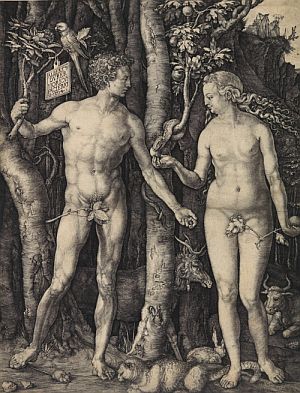Dürer and Italy exhibition at Hunterian Art Gallery
Published: 29 January 2010
A new exhibition at the Hunterian Art Gallery focuses on the engravings of German artist Albrecht Dürer (1471-1528) and demonstrates how influential his prints were in Italy.
The Hunterian print collection includes some of the greatest Renaissance prints. ‘Dürer and Italy’, a new exhibition at the Hunterian Art focuses on the engravings of German artist Albrecht Dürer (1471-1528), and demonstrates how influential his prints were in Italy.
Albrecht Dürer of Nuremberg was the first great artist to achieve fame through his prints. The exhibition presents engraved masterpieces by Dürer alongside contemporary Italian works and illustrates the surprising cultural exchange that took place in the years 1500-1528.
Dürer’s fascination with Italy began early. His godfather, the Nuremberg publisher Anton Koberger, traded books and prints with Venice, contributing to the young artist’s enthusiasm. Two journeys to Italy were made in 1494 and 1505-7, on which Dürer promoted himself as an artist, studied art, and met engravers and exponents of the art of perspective, which was still unknown in Germany. 
Dürer’s prints were of two kinds: for the popular market he designed woodcuts, which were cheap and often sold as bound sets. The most popular were two series of the ‘Passion of Christ’ and another of the ‘Life of the Virgin’ (1511). His astonishingly detailed engravings were relatively expensive and appealed more to artists and collectors. They present figures and landscapes of unparalleled beauty that rapidly became highly fashionable especially in Italy.
Engravings are transportable and take an artist’s influence over large distances, and so Dürer’s work was soon known to Raphael in Rome, just as Dürer, as a young man in Nuremberg, knew engravings by Italian artists. Raphael did not make prints himself, but since he wished to publish his imagery, he provided sketches to be engraved by artists such as Marcantonio.
Marcantonio was one of the many Italian artists inspired by Dürer’s prints. Two of Marcantonio's best known works, his ‘Judgement of Paris’ and ‘Massacre of the Innocents’ are on display and provide a beautiful if somewhat dry classical vision when compared to Dürer's vision, tinged by his roots in Gothic illustration
The Hunterian is home to 130 prints by Dürer as well as an important collection of 16th century Italian prints. The exhibition ‘Dürer and Italy’ shows a small selection of these wonderful works.
Dürer’s treatise on perspective is also included, and has been borrowed from the Special Collections department, Glasgow University Library.
‘Dürer and Italy’ continues until 22 March 2010.
PICTURE: Albrecht Dürer, ‘Adam and Eve’, engraving, 1504.
© The Hunterian Museum and Art Gallery, University of Glasgow.
Further information:
Peter Black, Curator, Hunterian Museum and Art Gallery
Email: P.Black@museum.gla.ac.uk Telephone: 0141 330 5430
For images contact:
Harriet Gaston, Communications Manager, Hunterian Museum and Art Gallery
Email: H.Gaston@museum.gla.ac.uk Telephone: 0141 330 3310
Hunterian Art Gallery
University of Glasgow
82 Hillhead Street
Glasgow G12 8QQ
Open Monday - Saturday, 9.30am - 5.00pm
Closed Sundays
www.hunterian.gla.ac.uk/durer/
First published: 29 January 2010
<< January

